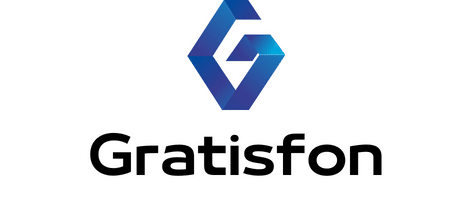What’s the Latest in Adaptive Clothing for People with Disabilities in the UK?

For a long time, clothing hasn’t merely been a way to shield our bodies from the elements, but a crucial expression of identity and personality. For people with disabilities, this is not any different; what we wear matters. However, the mainstream fashion industry has often sidelined people with disabilities. The good news is that there has been a recent surge in adaptive clothing, a type of fashion designed for those with disabilities. As you read on, you’ll discover the latest trends and brands in adaptive clothing within the UK, focusing on the top brands, their unique products, and the impact they are making in the fashion industry.
The Rise and Relevance of Adaptive Clothing
Adaptive clothing is not a new concept, but its rise to prominence is a recent phenomenon. It’s an inclusive approach to fashion that prioritises comfort, style, and functionality for individuals with disabilities. It caters to a wide range of needs, from wheelchair users to those with sensory issues and mobility restrictions.
Cela peut vous intéresser : 24/7 locksmith paris: fast solutions for every emergency
For years, people with disabilities have struggled with conventional clothing. Issues like hard-to-reach zippers, tight necklines, and uncomfortable fabrics have posed significant challenges. However, adaptive clothing takes these needs into consideration, offering solutions like magnetic buttons, adjustable waistbands, and soft, sensory-friendly materials.
Leading Brands in Adaptive Clothing
Some brands have risen to address the need for adaptive clothing. They have collections that not only cater to specific disabilities but are also stylish and on-trend. Let’s look at the notable brands making a difference.
En parallèle : What Are the Implications of Quantum Computing on UK Cybersecurity?
Primark is one such brand based in the UK. Known for their affordable range, they’ve integrated adaptive clothing into their collections. They’ve partnered with designer Grace Mandeville, who has a disability herself, to create a range of clothing and accessories. The collection, dubbed Unhidden, features easy-to-wear pieces, with the emphasis on style and accessibility.
Another brand worth mentioning is IZ Adaptive. This Canadian brand ships internationally, including to the UK, and offers a range of clothing for both men and women. Their range includes everything from casual wear to formal attire, all designed with wheelchair users in mind.
Adaptive Clothing for Women
When it comes to women’s adaptive clothing, the focus is on style, comfort, and functionality. Brands have put a great deal of effort into creating pieces that are not only practical but also fashionable.
The Unhidden collection at Primark, for example, includes stylish dresses with wide necklines for easy wear. The dresses also feature adjustable waistbands and magnetic closures to accommodate various physical needs.
IZ Adaptive’s women’s collection, on the other hand, offers everything from trendy denim to chic jackets, designed specifically for wheelchair users. The brand’s emphasis on fashion-forward designs ensures that women with disabilities don’t have to compromise on style.
Adaptive Clothing for Men
Men’s adaptive clothing range is equally impressive. Brands have put considerable effort into creating pieces that are stylish, practical, and comfortable.
Primark’s men’s collection under the Unhidden range includes fashionable shirts with magnetic buttons, making them easy to put on and take off. The collection also offers trousers with adjustable waistbands and easy-access pockets.
IZ Adaptive’s focus for men’s wear is on comfort and ease of wear. Their range includes stylish jackets, shirts and trousers, all designed with the needs of wheelchair users in mind.
Shopping for Adaptive Clothing
Shopping for adaptive clothing has become easier, with many brands offering their products online. Primark shoppers can browse their Unhidden collection in-store or on their website. Meanwhile, IZ Adaptive’s range is available on their official website, making it easy for customers to shop from the comfort of their homes.
In addition to these brands, several online platforms cater specifically to adaptive clothing. These platforms feature various brands and designers, giving customers a wide choice of stylish and functional pieces.
The rise of adaptive clothing is a significant step towards inclusivity in the fashion industry. It’s not just about providing suitable clothing options for people with disabilities, but also recognising and respecting their right to express their personality and style through what they wear. While there is still a long way to go, the progress made is promising.
Incorporating Big Brands and High Fashion into Adaptive Clothing
In recent years, big brands and high fashion designers have started to recognise the importance of incorporating adaptive fashion into their collections. Adaptive clothing has seen significant advancement beyond traditional brands, with the fashion industry’s heavyweights now focusing on accessibility.
Tommy Hilfiger is one of the brands leading the way in adaptive fashion. The brand made headlines with their Tommy Adaptive line which offers stylish clothing options designed with the needs of people with disabilities in mind. The collection includes a variety of clothing items for men, women, and kids, all featuring clever modifications such as velcro brand closures and magnetic buttons to make dressing easier. Tommy Hilfiger is not only committed to inclusivity but also to maintaining the high-fashion appeal of their collections.
The push into adaptive clothing is not limited to well-established brands. Young, emerging designers are also recognising the need for accessible fashion. Bombini Tribe, a British brand, is a perfect example. Their clothing line, designed for children with disabilities, has won praise for its innovative design and practicality.
These brands are making significant strides in making the fashion industry more inclusive. However, as the demand for stylish and functional adaptive clothing continues to grow, more brands will need to follow suit.
Conclusion: The Future of Adaptive Clothing
The recent developments in adaptive clothing are certainly promising. More brands are understanding the need to cater to a wider audience, including people with disabilities. And it’s not just about fulfilling a need; it’s about allowing every individual to express themselves through their clothing.
However, despite the progress, there is still a long way to go. The fashion industry needs to continue working on making their clothing lines more accessible, not just in design but also in price. While brands like Primark and Bombini Tribe offer more affordable options, high-fashion brands remain expensive.
In the future, we hope to see more brands, both high-street and luxury, offering adaptive clothing lines. We also hope for advancements in technology that could take adaptive fashion to the next level, such as clothes with built-in assistive devices.
But most importantly, we want to see a shift in mindset. Adaptive clothing shouldn’t be seen as a niche market. Instead, it should be an integral part of the fashion industry. After all, everyone, regardless of their physical abilities, deserves to look and feel their best.
As the saying goes, ‘Fashion is for everyone.’ It’s high time the industry truly took this to heart.
